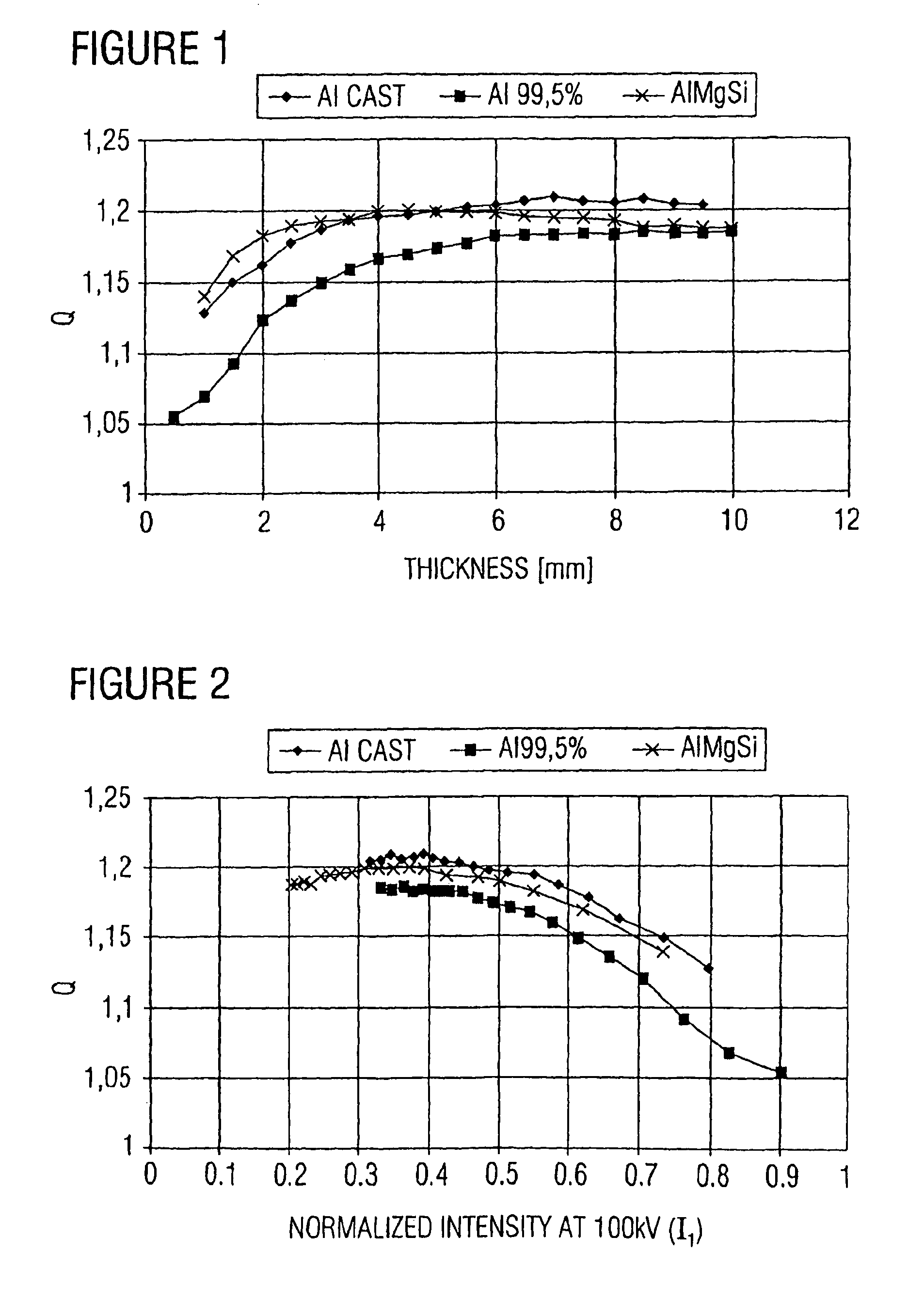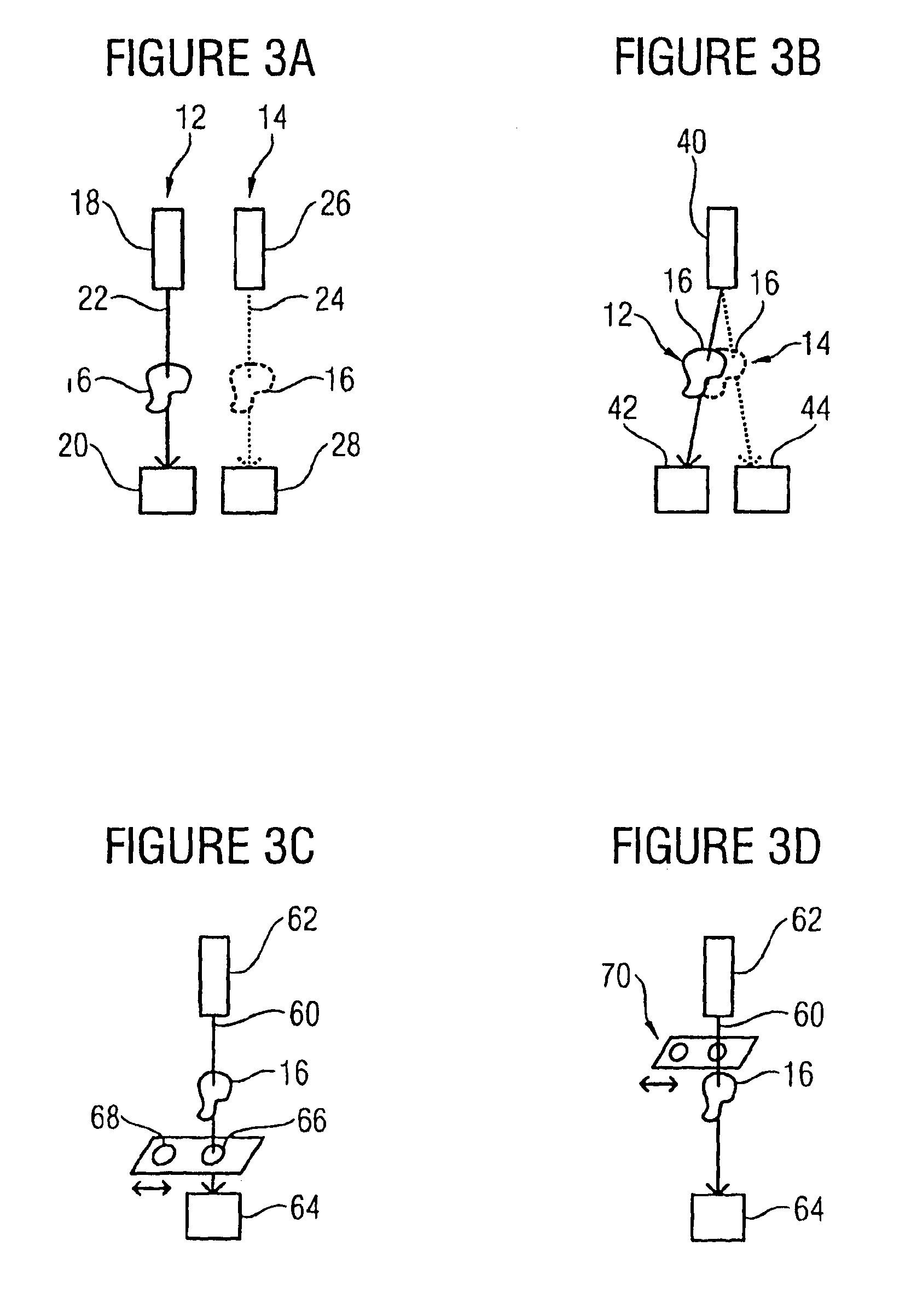Method and apparatus for determining an object material
a technology of object material and method, applied in the direction of instruments, liquid/fluent solid measurement, engine lubrication, etc., can solve the problems of high false classification, high false sorting, no or insufficiently reliable methods in industrial use, etc., to achieve high material throughput and differentiation of small particles, the integration time of the x-ray detector is very short, and the spatial resolution of the detector is high.
- Summary
- Abstract
- Description
- Claims
- Application Information
AI Technical Summary
Benefits of technology
Problems solved by technology
Method used
Image
Examples
Embodiment Construction
[0025]Before explaining preferred embodiments of the present invention on the basis of the figures in greater detail in the following, it is pointed to the fact the subsequent embodiments only exemplarily refer to the transmissive X-ray examination, but that the present invention may also be applied to other examination types in which material is to be differentiated by transmission or reflection of polychromatic radiation and in which a shift of the center-of-gravity energy, and thereby a shift of the effective interaction coefficient, such as the absorption or reflection coefficient, arise by different interaction coefficients.
[0026]On the basis of FIGS. 1 and 2, at first the basics necessary for understanding the material determination according to the embodiments described in the following will be explained. It is the aim of the material determination according to the subsequent embodiments to associate the material of an object with a material from a predetermined plurality of ...
PUM
| Property | Measurement | Unit |
|---|---|---|
| acceleration voltage | aaaaa | aaaaa |
| voltage | aaaaa | aaaaa |
| radiation frequencies | aaaaa | aaaaa |
Abstract
Description
Claims
Application Information
 Login to View More
Login to View More - R&D
- Intellectual Property
- Life Sciences
- Materials
- Tech Scout
- Unparalleled Data Quality
- Higher Quality Content
- 60% Fewer Hallucinations
Browse by: Latest US Patents, China's latest patents, Technical Efficacy Thesaurus, Application Domain, Technology Topic, Popular Technical Reports.
© 2025 PatSnap. All rights reserved.Legal|Privacy policy|Modern Slavery Act Transparency Statement|Sitemap|About US| Contact US: help@patsnap.com



